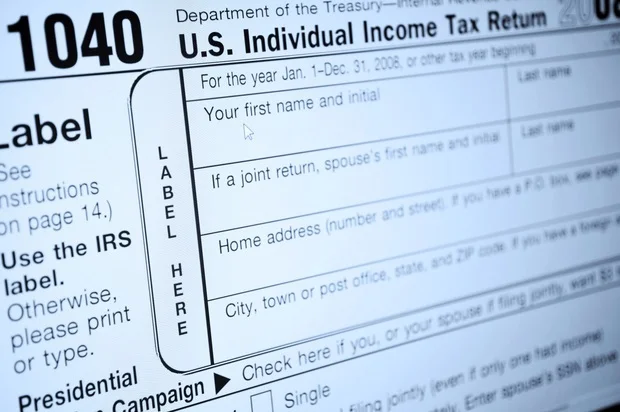Biden’s Taxpayer-Funded Childcare Plan Won’t Work, Harvard Economist and Obama Ally Concludes
The Biden administration is proposing to spend $225 billion on subsidized daycare over the next decade as part of its nearly $2 trillion American Families Plan. This is on top of the proposed $200 billion the administration hopes to spend to create a universal government preschool program for 3- and 4-year-olds.
The president’s plan is presented as a way to get mothers back in the labor force by subsidizing child care expenses. “The high cost of child care continues to make it hard for parents – especially women — to work outside the home and provide for their families,” the plan states. Yet, a Harvard economist who served in the Obama-Biden administration as the chairman of the Council of Economic Advisors challenges the effect of the American Families Plan on parents’ workforce participation.
In a study released last month, economist Jason Furman and his colleagues analyzed the impact of pandemic-related child care disruptions on labor market participation. They wanted to see how much of the overall unemployment experienced by workers between February 2020 and April 2021 was a result of parents, and particularly mothers, who encountered child care barriers, including widespread school closures.
The results of their study should tap the brakes on the Biden administration’s aggressive child care plan. Furman and his co-authors conclude that child care disruptions had very little impact on parents’ employment over the past year, and that government efforts to subsidize child care won’t lead to substantial increases in labor force participation.
In their report, the researchers reveal that “differential job loss among parents, or even mothers specifically, accounts for a negligible share of aggregate job loss and could even have led to a small increase in jobs between the first quarters of 2020 and 2021.”
They continue: “This analysis demonstrates that despite the widespread challenges that parents across the country have faced from ongoing school and daycare closures, excess employment declines among parents of young children are not a driver of continuing low employment levels.”
In fact, parents with young children have actually fared better over the past year than workers without children. The researchers found that the overall employment rate of people without young children dropped 5.2 percent, compared to a 4.5 percent decline for parents of young children.
The economists concluded that factors such as supplemental unemployment benefits and continued virus fears are more to blame for ongoing reduced workforce participation than child care challenges.
Effects of Government-Subsidized Child Care
Even if government-subsidized child care were to increase parents’ labor force participation, it may come at a cost beyond its multi-billion-dollar sum.
A 2015 study on the long-term impact of universal child care subsidies in Quebec found that the program boosted parental employment, as parents sent their children to daycare rather than providing care themselves. But the children paid the price.
Not only did the children who participated in the Quebec program not have any better academic outcomes than children in other Canadian provinces who did not, they had worse non-academic outcomes than other children.
“We find that the negative effects on noncognitive outcomes persisted to school ages, and also that cohorts with increased child care access had worse health, lower life satisfaction, and higher crime rates later in life,” the researchers concluded.
Boys were particularly harmed by the Quebec child care subsidy program. “Increases in aggression and hyperactivity are concentrated in boys, as is the rise in the crime rates,” the researchers found.
The Economist recently noted that “Joe Biden wants to Europeanise the American welfare state” by installing child care subsidies, universal government preschool, “free” community college, and related programs. But similar European efforts should provide a warning to America not to follow in its footsteps.
For instance, when the UK implemented subsidized child care and preschool programs, it led to private providers going out of business, along with higher costs and less customer satisfaction.
“The shift to this highly regulated, highly subsidized model has simultaneously raised market prices for those paying out-of-pocket, seen some nurseries go out of business, and brought ever-rising demands for governments to step in with yet higher subsidies or even direct provision to ensure ‘better quality,’” wrote economist Ryan Bourne of the Cato Institute. “It appears to be on a one-way street to effective nationalization.”
Some US economists think that high child care costs represent a “market failure” in need of government intervention. Heather Boushey, who sits on Biden’s Council of Economic Advisors, is one of them.
“If I need a service in order to go to work but the costs are too high at that moment in my career, this is exactly when you want government to step in and help smooth out those costs,” she told The Wall Street Journal this week.
It is true that child care costs can be a burden for many families, but the government is part of the problem. Steep government regulation of child care programs limits the supply of daycare providers by raising costs and barriers to entry. Occupational licensing and expanded degree requirements for daycare workers create additional hurdles. Not surprisingly, between 2005 and 2017, the number of small, in-home family child care centers dropped by 48 percent, with providers citing increased regulations as a reason. The government response to the coronavirus over the past year has only made matters worse. Many small daycare providers have had to shut down entirely, contributing to supply shortages and raising costs.
Adding more government intervention into the child care sector will only exacerbate the problems that the government itself has created. As the Nobel prize-winning economist, Friedrich Hayek said, “the more the state ‘plans’ the more difficult planning becomes for the individual.” The government shouldn’t “step in and help smooth out those costs,” as Biden advisor Heather Boushey suggests. The government should get out of the way and let individual parents and child care providers trade with each other without burdensome regulations and arbitrary requirements that reduce supply and increase costs for families.
The recent study by Harvard’s Jason Furman and his colleagues exposes the fact that parents with young children have not experienced more job loss than other workers, and have not been disproportionately hindered by child care challenges over the past year. This finding, along with the poor results and adverse impact of government-subsidized child care programs in other countries, should remind us that government daycare is a bad idea.
Like this story? Click here to sign up for the LiberatED newsletter and get parenting and education news and analysis like this from Senior Education Fellow Kerry McDonald in your inbox every week.
This article was originally published on FEE.org




